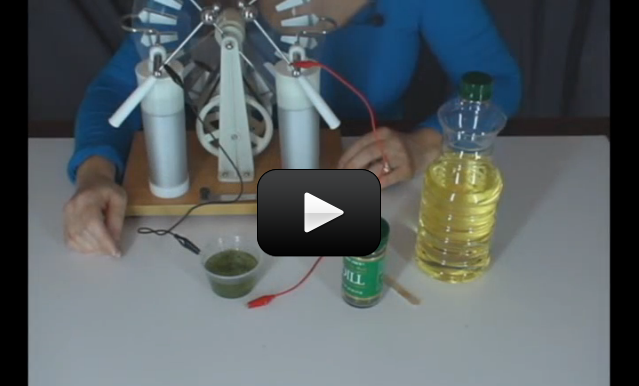Have you wrapped your mind around static electricity yet? You should understand by now how scuffing along a carpet in socks builds up electrons, which eventually jump off in a flurry known as a spark. And you also probably know a bit about magnets and how magnets have north and south poles AND a magnetic field (more on this later). Did you also know that electrical charges have an electrical field, just like magnets do?
It’s easy to visualize a magnetic field, because you’ve seen the iron filings line up from pole to pole. But did you know that you can do a similar experiment with electric fields?
Here’s what you need:
- dried dill (spice)
- vegetable or mineral oil
- 2 alligator wires
- static electricity source (watch video first!)


Electrical fields aren’t visible to us. We are able to “see” static electricity in a dark room – and on a larger scale, lightning – because the air is ionized and heated. So in those cases we are actually seeing the reaction and not the electrical force itself.
I hope this helps!
why can’t you see the electrical force in the cup pushing and pulling the dill? 🙂
I would try it (as well as any others you have, like anise or caraway). See what works, just like a real scientist!
NEAT! Mom doesn’t have any dill. Will rosemary do? I mean, that’s like little rods too.
WOW, thats so cool thankfully my brother has alligator wires 🙂
I am sorry you are having trouble! Are you sure you are logged in? The videos are playing over here. I will send you a personal email so we can figure out what’s going on for you.
The link to seeing electrical fields is not working. Can you please fix this. We have tried 5 different links today and none are working.
There is a big difference between batteries and static electricity that is build up on your clothing. Static electricity is in the thousands of volts and it’s this high voltage that allows static to jump from one person to another and also create the magnetic field that effects the dill in the cup. A battery doesn’t have nearly enough voltage to create a magnetic field strong enough to effect the dill, so when you connected the battery to the cup, the magnetic field just wasn’t strong enough to effect the dill.
Static electricity can also be discharged by just about anything you touch! So even though you built up a charge on the balloon, the process of connecting it to the alligator clips could have caused the charge on the balloon to be transferred to something else. Try building a charge up on the balloon with it already connected to the alligator clips and the cup. This way, any charge that you build up will transfer directly to the cup.
—Engineer David H., Supercharged Science
Hi, this is Ben (I’m 9 years old). I was able to get this to work with a balloon. I charged the balloon with my hair and then held it close to the plastic cup.
However, when I connected my plastic cup to a battery using alligator clips nothing happened. Do you know why? Also, after I charged the balloon with my hair I tried connecting alligator clips to the balloon and my plastic cup and that didn’t work either??
Yes, it’s 25,000 volts which feels like a pinch on your fingertip.
wonder if I do it to myself… I will get shocked 😀
That’s COOL!!!!!…………… = ]
Whoops – sorry about that. Thanks for the tip – the link works again. 🙂
the link ‘static electricity’ is broken